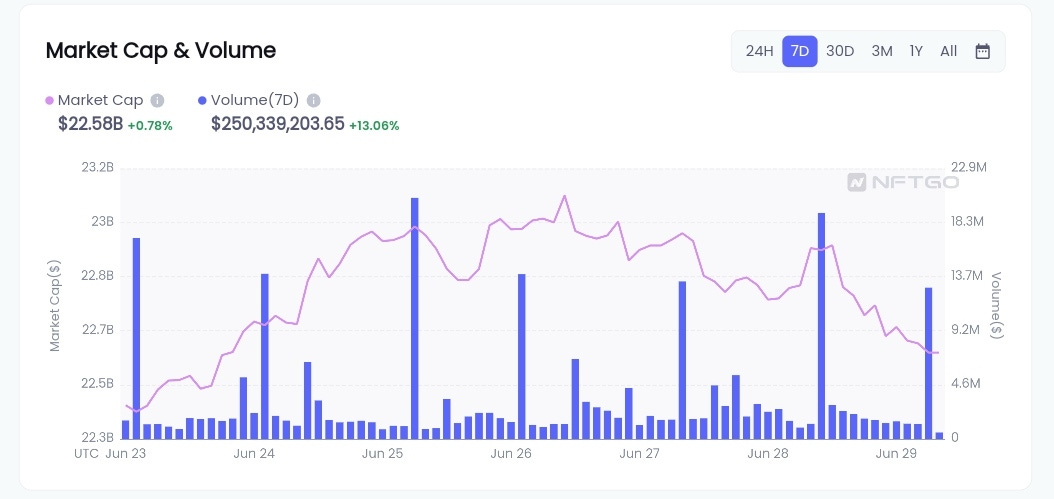What will Trigger the Next NFT Boom?
The Intelligent Insurer 72: Will accessibility and transparency trigger the next NFT boom?
Over the past two years, non-fungible tokens (NFTs) have made several headlines. Their meteoric rise to fame has attracted numerous investors, both retail and institutional. While the NFT rally appears to be leveling off in 2022, improvements in accessibility and transparency could spark the next NFT boom.
In the latest Intelligent Insurer, we examine the impressive growth of the NFT space during its short existence and the challenges hindering mainstream adoption. We will also analyze the solution to these issues as market analysts predict big things for the NFT industry. First, we will look at some exciting updates from our development team.
Insured Finance software development update
We remain committed to our goal of pushing the development of our next-gen digital asset insurance platform to the next level in 2022. Therefore, we are pleased to announce that our mainnet release is right around the corner.
At Insured Finance, we are especially committed to providing users with an intuitive and secure experience. Hence, we are currently running final tests on every feature available on the platform before launch.
These tests will help us validate that there are no flaws in our code and designs that could endanger user funds. We are working hard to ensure that users have no cause for complaint once the mainnet goes live.
We are currently working to guarantee a smooth mainnet release. Our team cannot wait for the launch and we are confident that users will enjoy all the features we've prepared over the past few months!
Reflecting on the rise of NFTs
Dismissed as a fad early on, NFTs have proved resilient over their short existence and are currently one of the most popular products of the digital asset industry. Traditional and digital artists quickly caught on to the vast potential of this asset class, and NFTs infiltrated the world of fine art. They made their way into Christie’s Auction House, where Beeple's NFT was sold for $69 million.
As NFTs evolved, they went from 8-bit pixelated images to high-fidelity 3D animations in just a couple of years. Interest in NFTs increased so much in 2021 that its trading volumes saw a 21,000% increase from 2020, recording volumes of over $17 billion. Currently, the NFT market cap is sitting at $22.5 billion, with over $250 million in weekly trading volume.
(Source: NFTGo)
While these figures seem impressive, a recent report from Chainalysis reveals that market interest in NFTs saw a major decline in 2022. For one thing, the report noted that institutional NFT purchases have remained inconsistent since the beginning of the year. Although institutions recorded large transactions in February, the value has since dropped drastically.
(Source: Chainalysis)
NFT issues hinder adoption
Despite their impressive performance over the past few years, NFTs are still largely considered inaccessible. One of the biggest challenges to NFT adoption is the complexity of onboarding processes, including minting, purchasing, and selling them.
The majority of NFT minting platforms are too complex for the average user to navigate. When minting an NFT, creators must first choose which blockchain to build on and the marketplace to sell their work. Although these decisions may appear basic for crypto-savvy creators, that is not the case with those with little crypto knowledge. These decisions result in rabbit holes of complex information and sophisticated processes that deter the average user from moving forward.
Even if a user decides to buy minted NFTs, the process of crypto on-ramping can be complicated. NFTs are typically purchased with some of the most common cryptocurrencies, including ETH, instead of fiat.
For NFTs to be accessible, they must be purchased and used by investors irrespective of their crypto knowledge. The challenge here is that people with little to no crypto know-how find it cumbersome to convert fiat to crypto, such as ETH, and afterwards to an NFT. They are faced with the challenge of deciding which wallet is compatible with the platform they intend to buy NFTs from and afterwards navigating the buying process.
Moreover, the staying power of NFTs and the large transaction volumes have twisted the motive with which most creators approach the space. Many NFT project creators build substandard projects and treat investors as a source of liquidity, leaving rug pulls and abandoned projects in their wake. An increase in these NFT-related scams heightens investors' skepticism and undermines confidence in the asset class.
In October 2021, creators of the popular 10,000-piece Evolved Ape NFT series pulled out of the project a week after it launched. They stole over $2.7 million worth of investors' funds. Earlier in January, the industry was hit with another NFT-related rug pull. The Frosties NFT team vanished with $1.3 million raised from purchases despite promising huge plans for investors.
Accelerating the next NFT boom
Despite existing challenges, the NFT space is moving into a new era of growth and maturity. The market is starting to mature with an influx of capital from large tech firms. A panel of 30 FinTech experts recently predicted that the NFT market will reach $146 billion in 2025. However, to set off the next NFT boom, project developers need to improve the accessibility and transparency of projects to attract mainstream users.
For one thing, users should be able to purchase NFTs seamlessly despite having little knowledge of how cryptocurrencies work. A few NFT marketplaces, including Nifty Gateway, are solving this issue by allowing investors to purchase NFTs using fiat currencies. Wider implementation of this solution will foster inclusion, allowing average users to enter the NFT space.
NFT minting processes also need to be simplified to allow everyone to easily mint, list and sell their works. An increasing number of blockchain platforms are creating what is called "white-label custom NFT solutions". These solutions, including OpenSea Clone and Rarible Clone, are customizable NFT marketplaces that allow users to issue and trade their NFTs easily.
Ultimately, investors must protect themselves against losses from unexpected events, including rug pulls. Adding insurance products, such as those offered by Insured Finance, gives investors all-around protection against market risks. With these safeguards in place, investors can confidently participate in the NFT market during the next boom.
About Insured Finance
Insured Finance is a decentralized, peer-to-peer insurance marketplace. Users can request customized insurance on a wide variety of digital assets, thereby ensuring full protection. Those fulfilling requests can earn premiums and earn a competitive return on their capital. Claims are fully collateralized and settled instantly.



